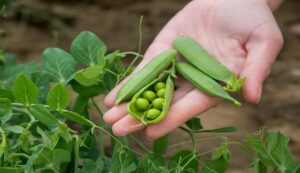Pea cultivation: Winter rain gives great benefit to this crop
Pea cultivation: In Uttarakhand’s hilly areas, rain and snowfall have made it colder, but the rain has also made the faces of the local farmers more radiant. In Uttarakhand’s rain-fed agricultural regions, rain has given farmers optimism. It is now time for the pea plant to begin vegetative development, over two months after the peas were first sown in the hilly areas. The peas then begin to produce blooms and pods. The pea crop will be greatly impacted by this rain.

Rainfall has decreased.
Regarding the impact of rain on pea crops in mountainous areas, Dr. Tejpal Bisht, Senior Scientist in the Horticulture Department at Garhwal University, informed the media that although Uttarakhand is currently experiencing the winter rain season, the mountainous areas have not yet experienced adequate rainfall.
The Pea crop will benefit from water.
According to Dr. TS Bisht, the central and Terai parts of Uttarakhand have had almost little rain, whereas the high Himalayan regions have seen both rain and snowfall so far. According to him, the pea crop is most affected by rain since it is going through a period of vegetative development, which is followed by the formation of flowers and pods. The rain at this time will be beneficial to the pea crop.
Excellent for non-irrigated farms as well.
The production of peas in non-irrigated agricultural regions would greatly benefit from this rain. It is favorable for pea production if the rain persists at this time. The field may also suffer if there is an overwhelming amount of rain. Even if there is now no chance of additional rain, water drainage in the fields must be constructed in case there is more of it.





